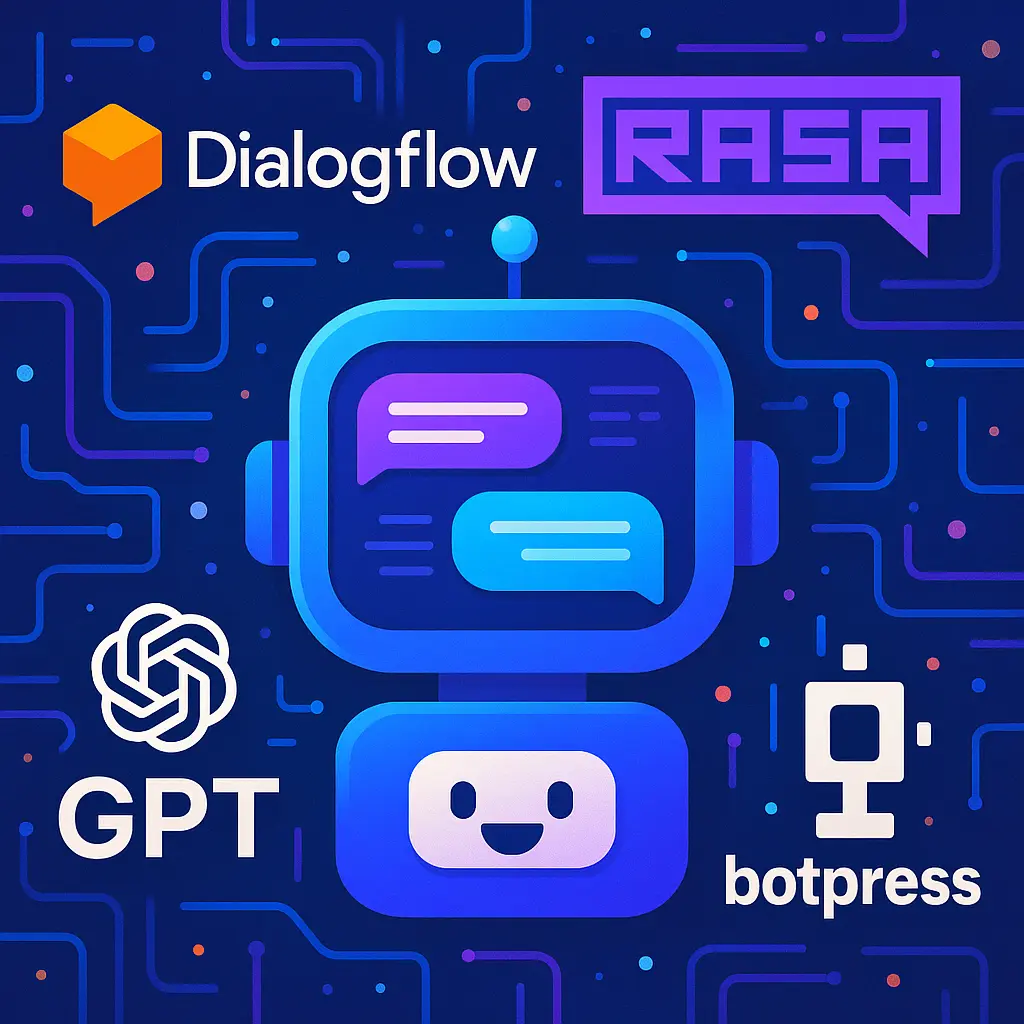AI Chatbot Development (DialogFlow, GPTs) full Syllabus

MODULE 1: Introduction to Chatbots & AI Conversation
What is a Chatbot?
A chatbot is a software program designed to interact with users through text or voice. Chatbots can answer queries, assist in tasks, and even engage in casual conversations. They are widely used in industries ranging from customer service to education and healthcare.
Types of Chatbots
- Rule-Based Chatbots:
- Operate on predefined scripts and decision trees.
- Responses are fixed and limited to programmed scenarios.
- Ideal for FAQs, simple tasks, or structured workflows.
- AI-Powered Chatbots:
- Use Artificial Intelligence and Machine Learning to understand user intent.
- Capable of handling dynamic conversations, learning from interactions, and providing personalized responses.
- Examples include chatbots powered by DialogFlow, OpenAI GPT models, and Rasa.
Real-Life Use Cases of Chatbots
- Customer Support: Automate responses to common queries, reducing wait times.
- Booking & Reservations: Airlines, hotels, and restaurants use chatbots to manage bookings.
- Education: Virtual tutors and learning assistants guide students through lessons.
- Healthcare: Symptom checkers and appointment assistants.
Overview of Popular Chatbot Platforms
- DialogFlow: Google’s NLP platform for building conversational interfaces.
- GPTs (Generative Pre-trained Transformers): AI models capable of generating human-like responses.
- Rasa: Open-source conversational AI framework for advanced bot development.
- BotPress: Modular, developer-friendly platform for creating interactive chatbots.
What Makes a Chatbot “Human-Like”?
- Understanding user intent accurately.
- Maintaining context over multiple messages.
- Providing natural, coherent responses.
- Adapting to different user tones and scenarios.
Module 2: Understanding NLP (Natural Language Processing)
Natural Language Processing is the backbone of AI-powered chatbots. It enables machines to understand, interpret, and respond to human language effectively.
What is NLP & Why It Matters
NLP combines linguistics, computer science, and AI to process human language. For chatbots, NLP allows the system to:
- Understand user questions.
- Identify relevant information.
- Generate accurate and context-aware responses.
Key NLP Concepts
- Intent: The purpose behind a user’s message (e.g., “book a flight,” “check weather”).
- Entity: Specific pieces of information extracted from the message (e.g., “New York,” “tomorrow”).
- Context: The conversation history that helps the bot maintain meaningful dialogue over multiple turns.
Preprocessing User Inputs
Before understanding the text, chatbots preprocess it to improve accuracy:
- Tokenization: Breaking down sentences into words or tokens.
- Stemming: Reducing words to their base form (e.g., “running” → “run”).
- Lemmatization: Converting words to their dictionary form (e.g., “better” → “good”).
Popular NLP Engines for Chatbots
- DialogFlow: Provides built-in NLP capabilities to detect intents and extract entities.
- OpenAI GPT: Uses deep learning to generate context-aware, human-like responses.
- LUIS (Language Understanding Intelligent Service): Microsoft’s NLP tool for creating intelligent bots.
- Rasa NLU: Open-source engine for intent recognition and entity extraction.
MODULE 2: Understanding NLP (Natural Language Processing)
- What is NLP & why it matters for chatbots
- Key NLP concepts: Intent, Entity, Context
- Preprocessing user inputs (tokenization, stemming, lemmatization)
- NLP engines (DialogFlow, OpenAI, LUIS, etc.)
MODULE 3: DialogFlow CX & ES (Beginner to Advanced)
Basic Concepts
- Google DialogFlow console overview
- Agent creation, Default intents
- Training phrases, responses, parameters
- Testing & debugging
Intermediate Topics
- Entities (system, custom)
- Context handling
- Fulfillment using Webhooks (Node.js or Python)
Advanced Topics
- Slot-filling
- Rich responses (cards, carousels, quick replies)
- Multi-turn conversations
- Integrating DialogFlow with web, Messenger, WhatsApp, Telegram
- Small talk, fallback, default events
- DialogFlow CX (advanced flow builder for large bots)
MODULE 4: GPT-based Chatbots (Using OpenAI GPT-4/GPT-3.5 API)
Basics
- What is GPT? How is it different from traditional bots?
- Creating an OpenAI account & API key
- Understanding GPT prompts & temperature, max_tokens, top_p, frequency_penalty
- Tools to build GPT bots (Node.js, Python, Make, Bubble, LangChain)
Building with OpenAI API
- Setting up a simple chatbot using OpenAI API (Python or JS)
- Memory in GPT chats (token-based memory vs external memory logic)
- Prompt engineering: structure, few-shot learning
- Context awareness & follow-up message handling
- Conversation history management
GPTs via ChatGPT Custom GPTs
- Introduction to OpenAI’s GPT Builder
- Crafting instructions and knowledge for your GPT
- Uploading files, APIs, tools to your custom GPT
- Publishing your own GPT bot
- Use-cases: teaching bots, support bots, storytelling bots, etc.
MODULE 5: Backend & Database Integration
- Connecting chatbots to databases (MongoDB, MySQL, Firebase)
- Saving user data (name, email, queries, etc.)
- Contextual answers using database lookups
- Real-time info integration via APIs (weather, price, etc.)
MODULE 6: UI/UX Design for Chatbots
- Designing friendly & emotionally aware responses
- Conversational flow best practices
- Building chatbot UI using:
- BotUI.js
- React with OpenAI
- WhatsApp, Messenger, or website widget
MODULE 7: Deployment & Integration
- Deploying chatbot on:
- Website
- WhatsApp (using Twilio/360dialog)
- Facebook Messenger
- Telegram
- Hosting DialogFlow fulfillment (Firebase functions, Heroku, Render, Vercel)
- Securing API endpoints (CORS, Auth)
MODULE 8: Analytics & Improvements
- Using DialogFlow analytics
- Using Google Analytics for web bots
- Feedback loops and bot training
- User data & privacy compliance (GDPR)
MODULE 9: Monetization & Real-world Projects
- Freelancing as a chatbot developer
- Building bots for lead generation, course selling, etc.
- Integrating payment gateways in bots (Razorpay/Stripe via webhook)
- Case studies of successful chatbot businesses
MODULE 10: Bonus Tools & No-Code Options
- Tidio, Landbot, ManyChat, BotStar, CollectChat
- Using Make (Integromat), Zapier with chatbots
- Hybrid bots: GPT + DialogFlow
- Voice-enabled chatbots with Google Assistant & Alexa


